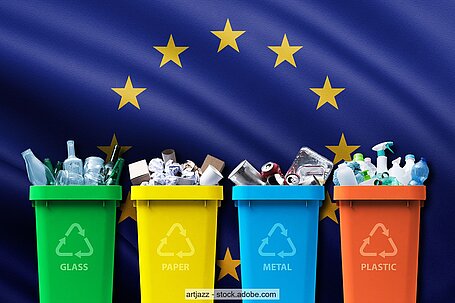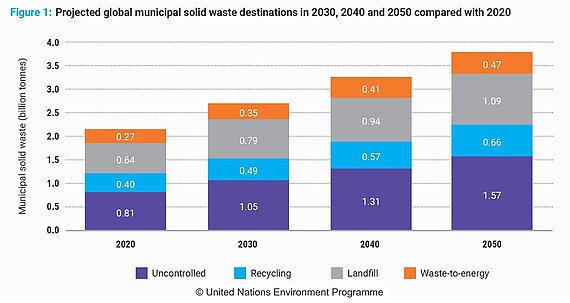
Although a growing number of countries, companies and organisations are calling for an expansion of the circular economy, the share of recycled raw materials is declining globally, according to the latest edition of the Circularity Gap Report. The non-profit organisation Circle Economy and the consulting firm Deloitte calculated that only 7.2 per cent of materials used in the global economy were from secondary and not virgin sources. The trend to increased extraction of primary materials is "getting worse year on year”, say the authors, noting that the share of circular inputs amounted to 8.6 per cent in 2020 and 9.1 per cent in 2019.
The role of virgin raw materials in the global economy was growing. "Circularity goes down as the general rate of global material extraction rises,” say the authors of the report. At the same time, more and more materials are being used in long-lasting "stocks” such as roads, homes and durable goods, leaving less material to cycle back into the economy.
The experts estimate that the global economy consumes more than 100 billion tonnes of raw materials each year, of which only slightly more than 7 billion tonnes are considered "circular" secondary materials. Non-metallic minerals account for nearly half of raw material extraction (43 billion tonnes). Biomass (25 billion tonnes) accounted for 27 per cent of all consumption, and while most of the material had "ecological cycling potential", the report highlighted the "precarious" ways in which biomass is often cultivated. Around 15 billion tonnes of fossil fuels are consumed annually as well as more than 9 billion tonnes of metallic ores, according to the report.
The study found that adopting a circular economy "could not only reverse the overshoot of planetary boundaries, but it could slash the global need for material extraction by about one-third. This reduction would require "removing fossil fuels from the global equation – especially coal – and lowering demand for high-volume minerals, such as sand and gravel, largely for housing and infrastructure”.
Use less, use longer, use again and make clean
The authors identify four key levers to transition to a circular economy. The first is to "use less” by reducing material use and making it more efficient. Secondly, products and infrastructure should be "used longer,” for example, through design for durability and reparability. "A more circular economy is also a slower one” with materials, components, products and even buildings and infrastructure locked in stocks that are "made to last”, according to the report.
To ensure a "clean” or regenerative circular economy, it is also necessary to phase out hazardous or toxic materials and processes, and substitute them with regenerative biomass resources, the authors say. "A circular economy aims to mimic natural cycles – by shifting to more regenerative farming practices, for example – while also maximising the share of circular biomass that enters the economy.” There must also be strategies to bring materials back into circulation and reuse "at their highest value.” The focus should be on maximising the volume of secondary materials re-entering the economy, "ultimately minimising the need for virgin material inputs”.



